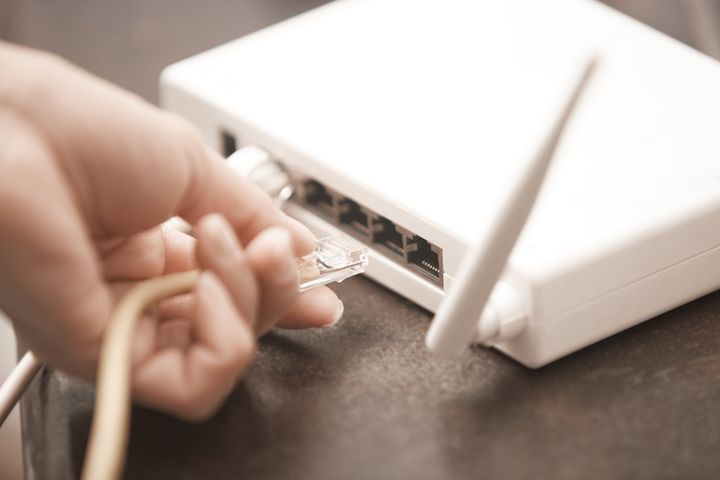
If you’re trying to save money by cord-cutting, you might have already ditched cable TV in favor of streaming services, such as Netflix and Hulu. After all, an estimated 33 million adults did so in 2018 alone. But if you maintained the same internet service (and, let’s be real, of course you did), there’s a good chance you’re still renting the modem from your cable provider. And if you’ve had the same service for five years, well, be prepared to do some upsetting math.
It’s possible to buy your own modem for a relatively small, one-time cost, which can save you as much as $156 on your bill in a single year. However, though it’s generally the most cost-effective option, owning your own modem does come with a couple of gotchas.
Should You Buy Your Own Modem?
Your internet setup will generally include two major pieces of equipment: a modem and a router. When signing up for internet service, the provider will usually send these items to you as rentals by default (some companies provide a two-in-one modem/router unit), with a separate line item in your bill. Unfortunately, the cost of renting a modem, and router if needed, is not exactly cheap.
Comcast is one of the latest internet service providers to once again raise its modem rental fee, most recently to $13 per month for the standard equipment. That means every year, Comcast customers pay $156 just to borrow a modem. And the company can decide to hike its rate again at any time.
Other ISPs charge comparable fees. G.E. Miller, a blogger at 20somethingfinance.com, put together a helpful guide to ISP rental fees. After Comcast, Verizon Fios is the next most expensive, at $12 per month, while others hover around $10 per month.
Changing ISPs is something you rarely do unless you move to a new city. So there’s no need to keep renting a modem or router as long as you plan to keep your current provider for at least the next year.
To use your own modem, start by looking up your ISP’s list of supported modems (if they offer this option, that is). Compatible equipment for many major ISPs can be found here:
Most of these options cost less than $100 (modem/router combos can be a bit more), which means your equipment will pay for itself in just a few months to about a year.
Next, swap in your new equipment. Your modem might automatically activate once you plug it in, but chances are you’ll need to call up your ISP’s customer support line and activate it. If you purchased a new router or modem/router combo, you’ll also need to set up the wireless network before you can connect any devices.
Once you’re all set up, send the rental equipment back to your ISP per their instructions. Be sure to ask for a receipt and verify that the rental charge has been removed from your next bill.
Benefits Beyond Money
In addition to saving money on long-term rental fees, there are a couple of other good reasons to purchase your own modem, according to PC World.
For one, you can likely find a better modem than what your ISP provides by shopping around. The equipment provided by ISPs is often older, even used, and doesn’t always support newer technology. That means you could boost your internet speeds and general performance by upgrading your modem, especially if you pay for a higher-tier internet package.
Owning your modem also means you have full access to its controls, allowing you to monitor, troubleshoot and adjust the system if necessary. Rented modems, on the other hand, rarely allow you that kind of access, forcing you to rely on customer service if there’s an issue.
Are There Drawbacks To Buying Your Own Modem?
Despite the many benefits of purchasing your own modem, there are a couple of downsides to consider first.
If you aren’t using equipment provided by your ISP, they won’t offer support if the modem stops working properly or breaks. The less technically inclined might feel it’s worth it to pony up the rental fee. From a purely mathematical standpoint, however, we can assure you it’s not. By the time your modem goes kaput, it should be much cheaper to simply replace it rather than have paid the monthly fees in exchange for troubleshooting or a replacement through the ISP.
One potential snag in the plan is that some ISPs may begin penalizing customers who choose to use their own modems as a way to make up for lost revenue. Comcast, for example, requires some customers to pay an extra $35 per month in other fees if they opt out of renting the company’s controversial xFi Gateway equipment at $15 per month.
It’s not clear whether other companies will employ the same strategy to push customers toward renting. One thing that is clear, however, is the Federal Communication Commission’s stance on allowing customers to own their own modems. According to FCC regulations, ISPs can’t bar customers from using their own equipment as long as it wouldn’t cause harm to the provider’s system.
It’s generally recommended that if you do decide to buy your own modem and router that you purchase them separately. That way, you can make fixes and upgrades independently. However, there’s no harm in buying a combo unit if simplicity is your goal.
The bottom line is that owning your own equipment instead of renting is the clear money-saving option. Just be sure your ISP doesn’t charge you in other ways, and report them if they do.